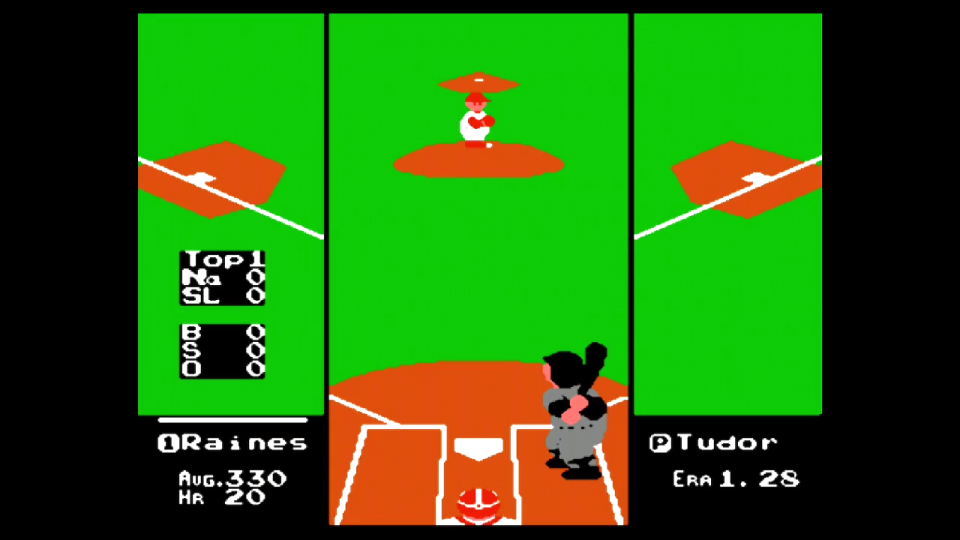The legacy of Tim Raines, old-school Nintendo and 'RBI Baseball'
I busted out my old-school Nintendo this week. Every time I dust off the light-gray top and plug in the hulking AC adapter, I figure this is going to be the time it finally says no, that not even my gale-force cartridge-blowing skills can resuscitate a 30-year-old machine. And every time it somehow springs to life, 8 bits of glory defibrillated, and two of the defining words of my childhood wipe across the screen, right to left.
R.B.I. BASEBALL, it says, in all caps, and with the push of seven buttons – start, left, A, left, left, A, A, forever embedded in my muscle memory – I see my old friend.
I knew nothing about Tim Raines the first time I played “RBI Baseball.” I was 7 years old. My baseball world began and ended at Cleveland Municipal Stadium, surrounded by 2,000 or so masochists who went to see the Indians play. There was no Internet. There was no MLB Network. There was no interleague play. Today’s fans absorb knowledge everywhere. I learned from a video game.
And what I learned about Tim Raines was that I loved him. I loved everything about him. I loved that he was left-handed. (Raines actually was a switch hitter, but “RBI Baseball” didn’t do nuance well, so every switch hitter was put on the left side. And George Brett, a lefty, for some reason hit from the right.) I loved that he hit .330. (Round numbers are irrationally cool to children and adults alike.) I loved how the ball jumped off his bat. (I’d estimate I’ve hit somewhere in the neighborhood of 1,000 leadoff home runs with Raines.) And I especially loved his speed.
There was this kid in my third-grade class named Teddy, and he was the fastest one on the playground – “but you’re not,” I’d note, a pedant even in my formative years, “as fast as Tim Raines.” And that got me looks, but looks I could take, because I felt like Raines was like the cool new band and I was the evangelist letting everyone in on the secret.

Little did I understand that appreciation for Tim Raines takes time. Not until the sabermetric revolution did fans understand Raines was one of the best players of the 1980s. The Baseball Writers Association of America needed a sea change in membership and a full decade to finally deem him worthy of induction into the Hall of Fame, which will welcome Raines into its orbit alongside Jeff Bagwell, Pudge Rodriguez, Bud Selig and John Schuerholz on Sunday afternoon. Even still, there’s a fair number who see Raines as little more than Ricky Henderson Lite, more deserving a spot in the Hall of Very Good.
Even if he is far from a no-doubt choice, Raines is Cooperstown-worthy. Because he is such an atypical candidate – a corner outfielder who didn’t hit for much power – he gets compared to Henderson and looks inferior. Place him alongside Lou Brock, though, and suddenly Raines more than belongs. He stole bases at a better rate. He hit for more power. He reached base nearly 150 more times than Brock in close to 1,000 fewer plate appearances. Raines, in fact, was on base in his career more times than Tony Gwynn. Brock reached the Hall on his first ballot. Gwynn did the same, with 97.6 percent of the vote.
Little about Raines was flashy, and that’s part of why it took the Internet to lobby/pressure/shame voters into backing Raines. I have cast four Hall of Fame ballots, and each included a checkmark alongside Raines, and every time I got a little jolt, my adulthood and childhood exchanging pleasantries at an unlikely intersection.
Every excuse I can get to rescue the Nintendo from the dark basement corner in which it resides I take. And so earlier this week emerged Raines at the plate, leadoff man for the National League All-Star team, facing Jimmy Key, starter for the American League. RBI purists deride my use of the stacked NL All-Stars, and to them I say: Yeah, and?
I’m not giving up Pedro Guerrero pinch hitting second and Dale Murphy third. I’m certainly not letting anyone else get Andre Dawson fourth and Eric Davis fifth and Mike Schmidt sixth. Even if Andres Galarraga – called, simply, “Gllrga” because of space constraints – is mediocre in the seven hole, I’ve got Gwynn pinch hitting eighth in front of the pitcher ninth. And I especially can’t quit the guy at the top.
One of RBI’s beauties is how in this simple world, where every player is the same size (short, fat) and every player the same skin color (Trump orange), strategies abound. A game this crude was hackable, and almost every time Raines was up, I developed this maneuver whereby I’d pull him toward the outside edge of the batter’s box mid-pitch. If the ball were over the plate or inside, I’d yank it hard, often for a home run. Outside pitches were almost guaranteed to get chopped to the left side for a single. I don’t know that my on-base percentage with Tim Raines was 1.000. But I bet it was close.
Raines was not the best player in “RBI Baseball.” By one measure – yes, this is measured – he is 12th. And you know what? That’s Tim Raines’ career personified. Others can sleep on him, overlook him, doubt him.
I’ll click on my NES, punch those seven buttons and smile, knowing my old friend, the new Hall of Famer, will be there to greet me.
More MLB coverage on Yahoo Sports:



